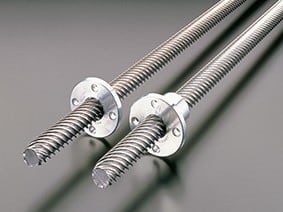There are many applications of lead screws. Mostly, they are used in linear actuators. In addition to this, lead screws are of different types and sizes. Selecting the right lead screw makes the job easier and ensures high quality and efficiency.
Linear motion is a movement in a straight path. Linear motion solutions are designed in a way that they take advantage of this type of movement in order to carry out many tasks. The problem arises when it comes to the selection of the right screw for the job. There is great importance in carrying out a task effectively and efficiently. Therefore, choosing the right type of lead screw for the job is good. There are factors that a person should consider when selecting a lead screw for a particular task. They include:
Thrust
Thrust refers to the force required to move the screw as well as its load. Thrust is of two types. The first type of thrust is known as peak thrust, which occurs during acceleration and is experienced for a short time. The other type of thrust is called continuous thrust. This type of thrust is experienced when a system has full linear motion. In order to meet all the requirement of a system, the lead screw diameter should coincide with the amount of thrust requirement. The greater the thrust, the larger the diameter.
Speed
The speed of the linear motion in a given application is essential. All types of lead screws have a speed known as critical velocity. This speed causes them to vibrate vigorously, thereby affecting their functionality. Designers have developed a ratio that shows the velocity at which the lead screw will move based on input rotations per minute (rpm). In applications that require high speed, a large lead screw is used to reduce the rpm. Therefore, large lead screws have lower potential rpm.
Accuracy
Accuracy is how closely the lead screw moves the load as per the tolerance level. In applications that require high accuracy, lead screws with high accuracy levels. They are usually more expensive as compared to others. However, developers cannot ignore functionality due to high costs of equipment. Therefore, machinists will still use highly accurate lead screws regardless of their high costs. Many industrial processes have high tolerances and so call for high-accuracy lead screws.
Repeatability
Repeatability refers to how closely the lead screw maintains tolerance after a number of movement. Many people confuse accuracy with repeatability. Some types of lead screws, such as acme screw and Helix lead, are characterized with high repeatability and are widely used because of this feature.
Backlash
Backlash refers to the allowance for linear motion given between the nut and the screw without turning them. Backlash reduces accuracy and accelerates wear of parts. Designers are working around the clock to come up with lead screws that have no backlash. One of such lead screws is Helix AAB Axial Anti-Backlash lead screw.
Resolution
Many people think that a good combination of linear tool motors and controllers is the only way to control resolution. However, the right type of lead screw will affect this. Lead screws with smaller diameter achieve high resolution easily as compared to those with large diameters.
The above factors are critical when an individual is faced with the dilemma of choosing the lead screw to use in a particular application.






